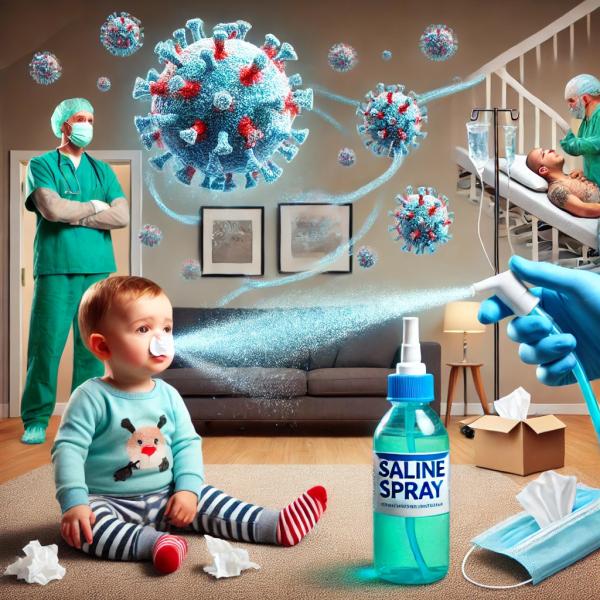
I first heard the rule of thumb, "the solution to pollution is dilution," during my surgical training when, during an abdominal surgery, the contents of the bowel, small or large, accidentally spilled into the abdominal cavity. We would “irrigate” the abdominal cavity with liter after liter of saline, hoping to reduce the chance of an intra-abdominal infection by reducing the presence of microbes through dilution. There is a logic to the idea, although the homeopaths would argue that through dilution, I am only making the vibrations of the microbes stronger, and there are no randomized controlled studies comparing dilution to doing nothing at all.
A more practical, everyday opportunity to practice pollution dilution was recently discussed at the meeting of the European Respiratory Society. [1] The study involved children, those vectors of seasonal disease, who, in addition to homework and their backpacks, bring home new pathogens in their nose and throat – in this instance, the viruses responsible for the common sniffles.
In a randomized study of 407 children aged six or younger, 301 developed upper respiratory tract infections (URTI). Half received hypertonic saline nose drops [2] three times a day for five days; the controls were treated with “usual care.”
- Symptom duration was two days shorter with hypertonic saline, more so when the virus was detected in nasal swabs
- Fewer household members developed URTI in the HS group (41%) vs. the control group (58%)
- Side effects were rare and mild, with no serious adverse events.
While many over-the-counter remedies alleviate symptoms, no simple treatment can reduce the duration of these colds and, more importantly, minimize transmission for the rest of the family.
"Reducing the duration of colds in children means that fewer people in their house also get a cold, with clear implications for how quickly a household feels better and can return to their usual activities like school and work."
– Steve Cunningham, MD Professor of Pediatric Respiratory Medicine
It is unclear what the underlying mechanism is for the success of hypertonic saline. The researchers proposed that the chloride in the salt solution enhanced hydrochloric acid's cellular defense system production, suppressing viral replication. There are more straightforward explanations. Hypertonic saline exerts an osmotic force, causing viral particles to rupture and expose their RNA but destroying their means of delivering that RNA to host cells. As I suggested earlier, mechanically reducing the number of viral particles will lessen but not prevent the risk of infection.
Nasal irrigation has a long history in Eastern, specifically Ayurvedic medicine. Here, the daily irrigation of the nasal passages is used to remove dirt and mucous using a Neti pot, a container filled with lukewarm isotonic (the same concentration as our plasma) saline. Of course, any parent who tries to give their child nose drops will quickly tell you that pouring water through a child’s nose will never happen.
[1] The data comes from an abstract submitted to the meeting and additional medical media commentary.
[2] Hypertonic saline is a salt solution that is more concentrated than the salt levels found in our plasma, which is 0.9%.



